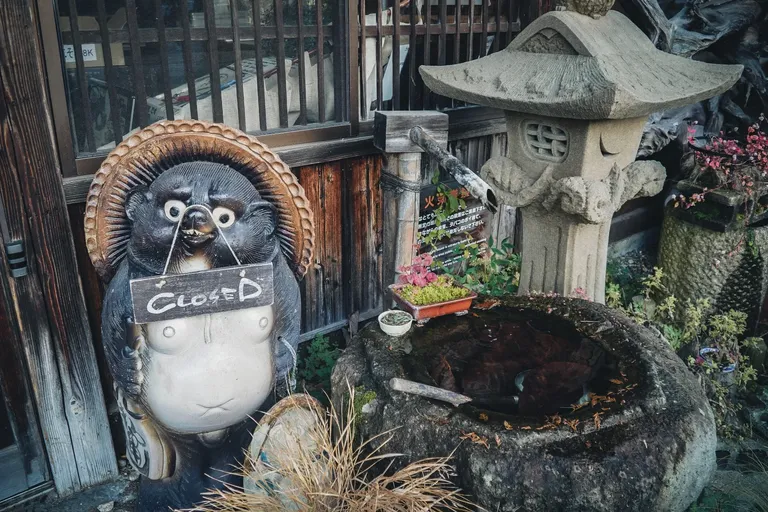
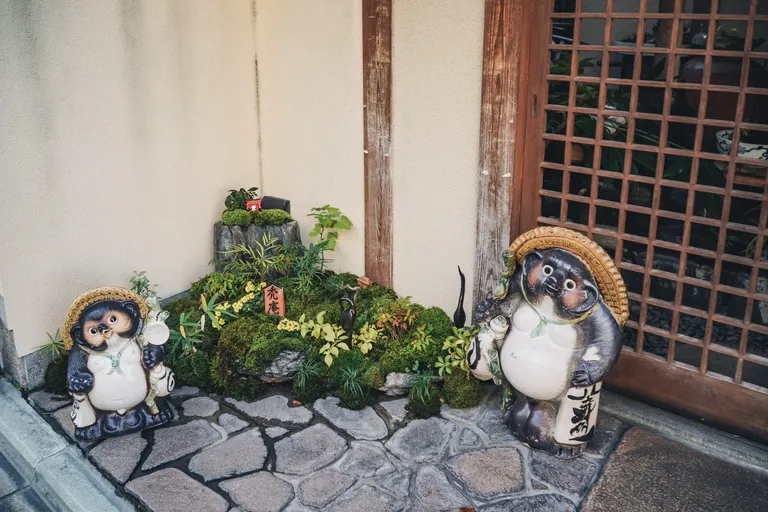
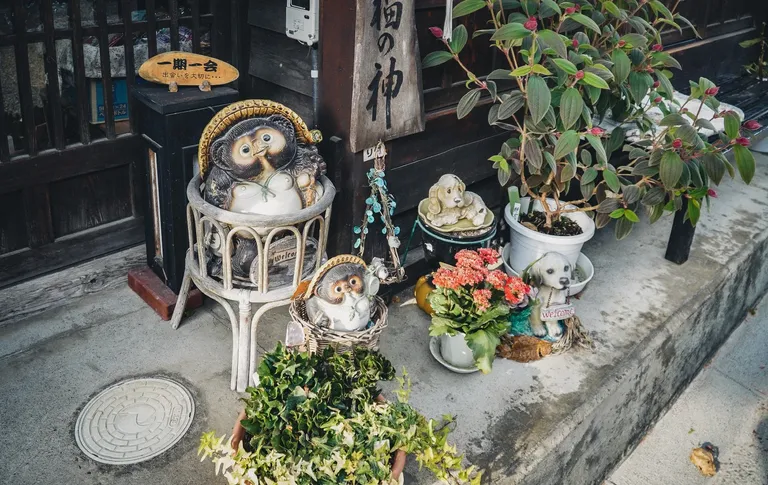
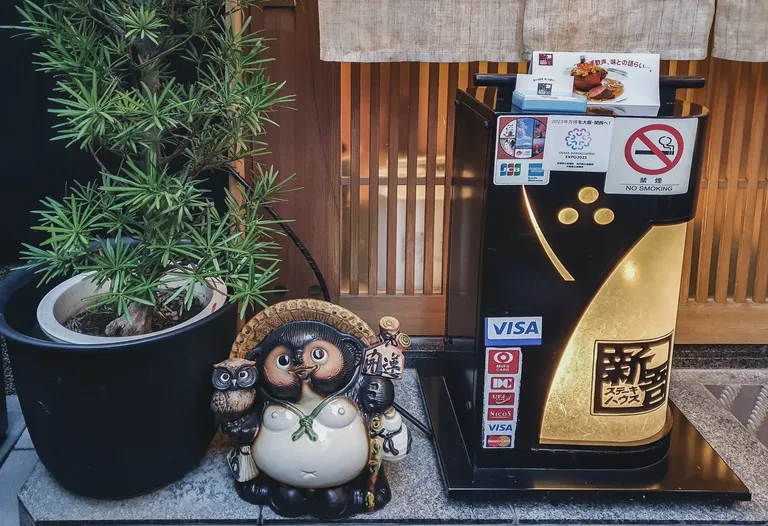
When it comes to ceramics, I noticed the adorable Shigaraki Tanuki mascot in many of my photos from Japan. Shigaraki ware is a type of stoneware pottery crafted in the Shigaraki region, which is home to one of the country's Six Ancient Kilns.
Tanuki, also known as the Japanese raccoon dog, is an endemic canid to Japan. It is a common motif in Japanese popular culture such as manga and anime.
Despite the long-standing history of the kiln and Shigaraki-yaki pottery, the beloved Shigaraki Tanuki is a relatively young member of its creations. Legend has it that this character was originally brought to life by the ceramic artist Tetsuzo Fujiwara during the Meiji period, gradually evolving into the delightful figure we know today.
Emperor Showa also helped promote Shigaraki Tanuki. In 1951, as a way to welcome his visit, the town of Shigaraki adorned his route with statues of Shigaraki Tanuki holding Hinomaru flags. The Emperor was captivated by this sight and was inspired to compose a poem in commemoration. The news spread through the media like wild fire, catapulting Shigaraki Tanuki to overnight fame and earning widespread recognition.
Enthusiastic cultural researchers even "invented" the concept of the "Eight Auspicious Features of Shigaraki Tanuki." These include the iconic large straw hat symbolizing protection from disasters, the big eyes representing astute judgment, and the ceramic sake bottle (tokkuri), which embodies the cultivation of personal virtues. Notably, the most prominent feature is the auspicious giant scrotum. In Japanese slang, testicles are referred to as "kintama(fortune)", and something containing "kintama" is called a "kinbukuro(fortune pouch)" symbolizing prosperity.
If you've visited Japan, you may have also noticed the presence of Shigaraki Tanuki in front of various establishments, such as restaurants, cafes, and hotels. The positive message it portrays, as well as the inextricable link between "Shigaraki" and "Tanuki," are ingrained in the people's collective psyche.
说到陶瓷和日本,发现那里的很多商户门前都摆放着开运吉祥物信乐狸。这些信乐狸照片拍自日本的不同地方,可以看到外形大都类似,只是细节略有差异。
这种信乐烧是在滋贺县甲贺市的古信乐地区烧制的陶器,所在地是日本六大古窑之一,至今还完整保留着依山而建的古老阶梯穴窑,还有已经开设了一百多年的信乐陶艺村,希望将来有机会可以去那里的陶艺教室看看,学习体验一下。
虽然信乐烧历史悠久,其中出名的信乐狸摆件却相对年轻,相传它的原型是由明治时期的一位陶艺师最先创造出来的。藤原铁造从小就在京都的清水练习烧陶,据说有天晚上他偶然看见一只野生tanuki在敲打自己的肚皮,受到启发后烧制出最早的信乐狸,接下来又逐渐演变成现今的各种造型。
上世纪50年代初,昭和天皇到访信乐町,看到沿途放满了拿着国旗、憨态可掬的信乐狸塑像,心情大好,题诗一首,说自己从小就爱收集信乐狸。于是,这个可爱又带点淘气的陶器吉祥物从此一夜成名,家喻户晓。
一些研究人员和媒体还趁热打铁,专门发文指出信乐狸的吉祥之处,比如头戴的草帽象征着避开灾厄,灿烂的笑脸意味着和气生财,随身的帐簿表明信用至上等。连人家的阴囊也被挖掘出“财运滚滚”的含义,因为日语俗称睾丸为“金玉”(きんたま),所以阴囊这种装着金玉的东西就是能助你发财的金袋喽······ 这联想力,真是不得不服呀!
记得曾经在漫画里看到过tanuki的阴囊被拉长作为渡船、气球之类的,我还好奇查了下tanuki的原型动物,说是日本特产浣熊犬,虽然有些资料把它翻译成“狸猫”,人家其实是一种犬科动物,阴囊也并没有什么出奇之处。
还有传说中提到这种浣熊犬和狐妖都会变形成为人类,进行各种恶作剧。而在现实中,变成人类虽然不可能,但冬天冷了增加一圈暖毛还是可以的:
According to some folklores, the Tanuki and the Kitsune are tricksters who can transform into people and do wicked actions against humans. Although that seems impossible in reality, tanuki can still alter its outlook depending on the season:
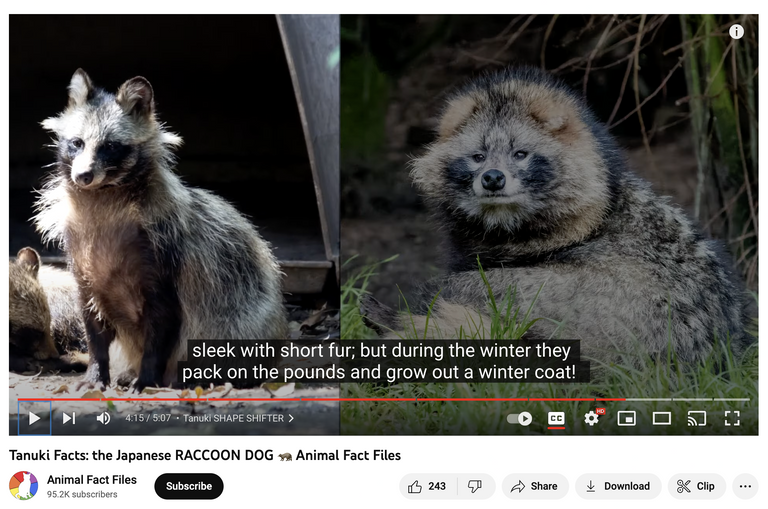
Here is a collection of Shigaraki Tanuki photos that I shot in different parts of Japan:

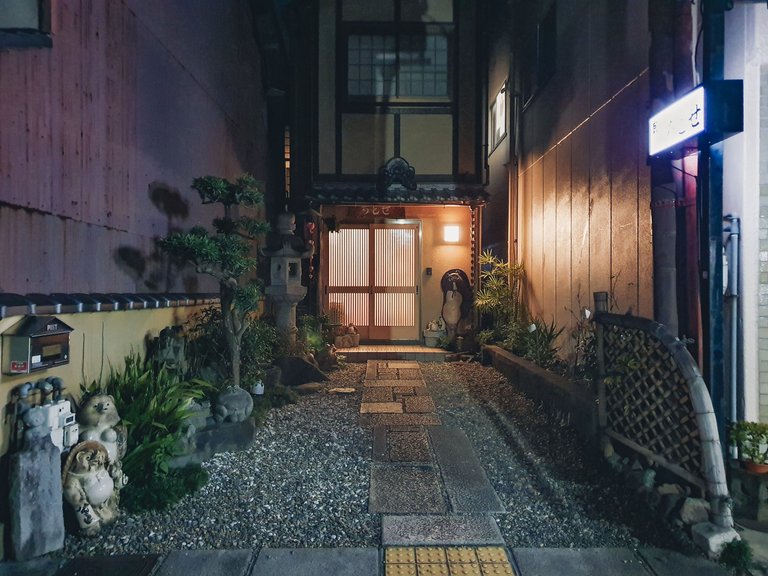
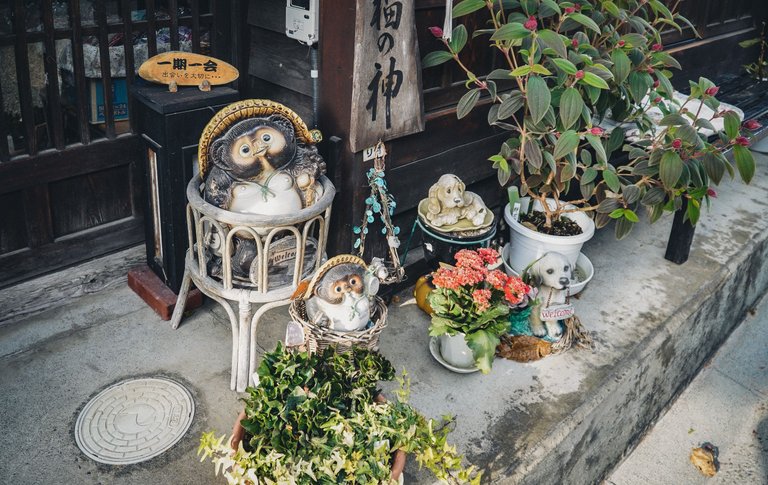

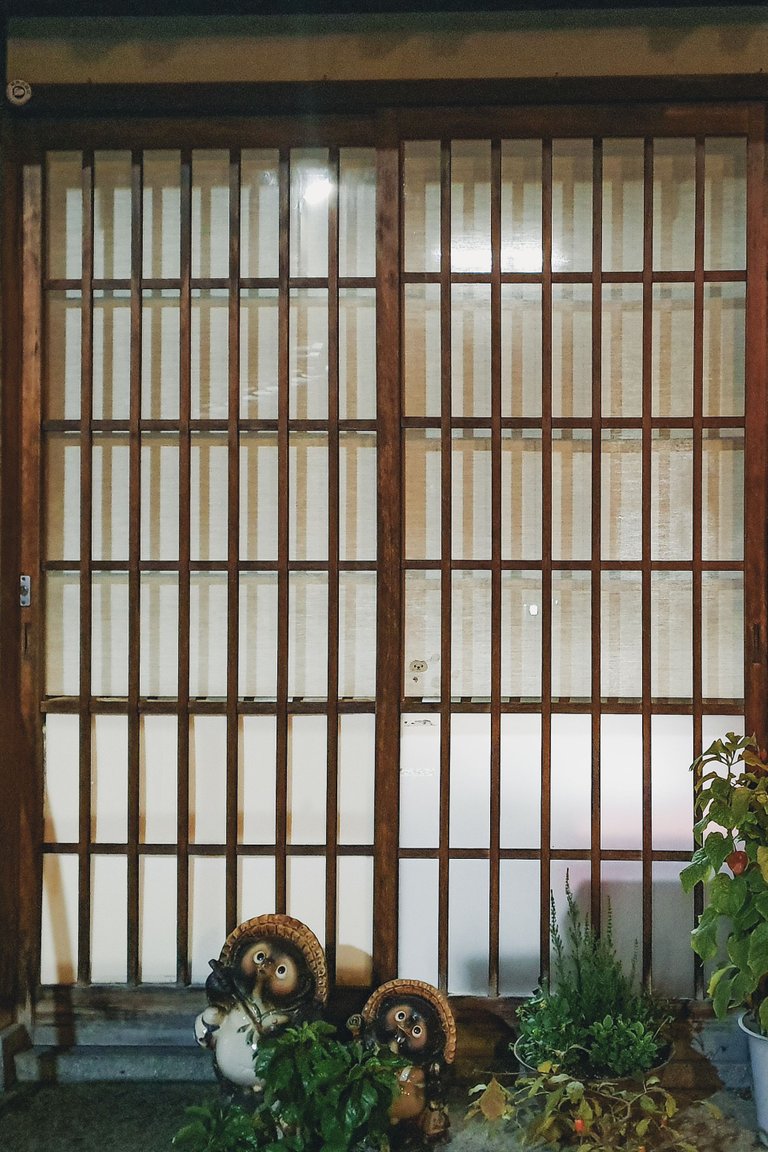
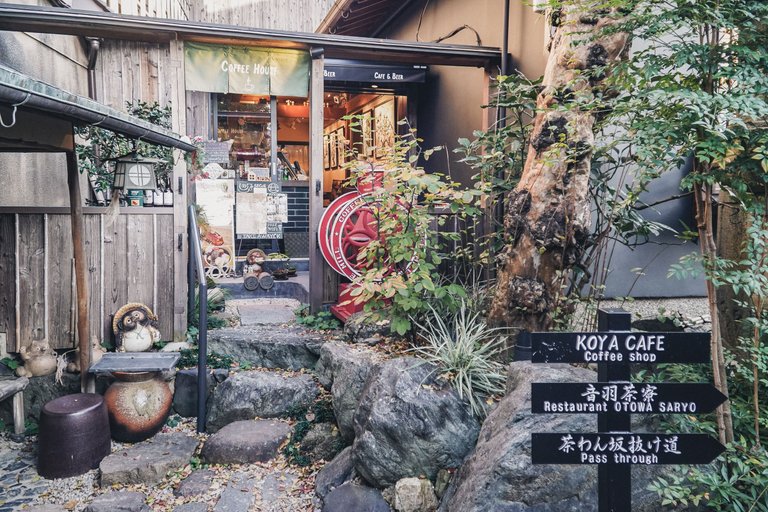
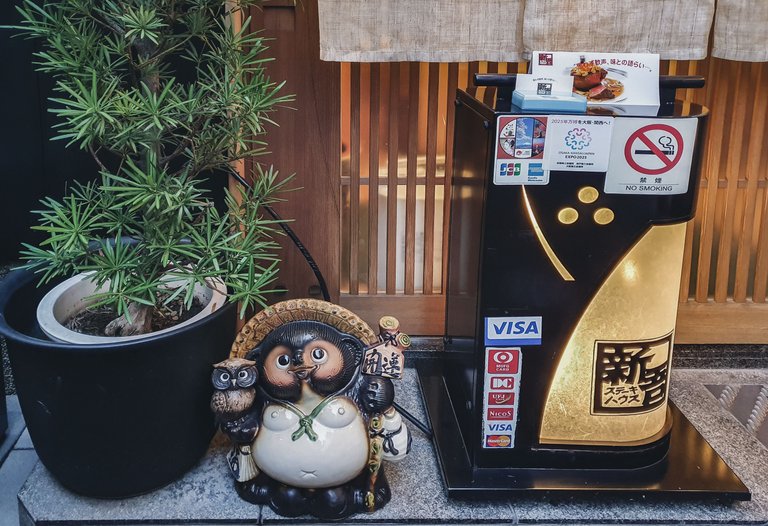
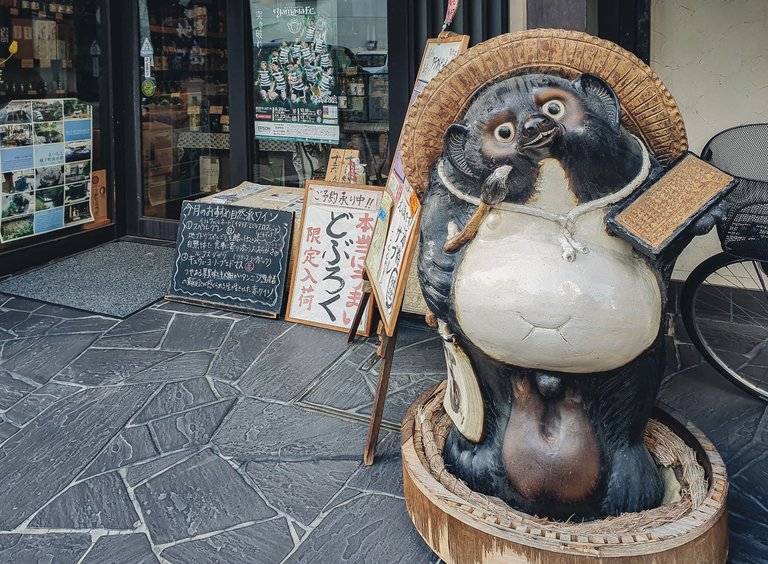
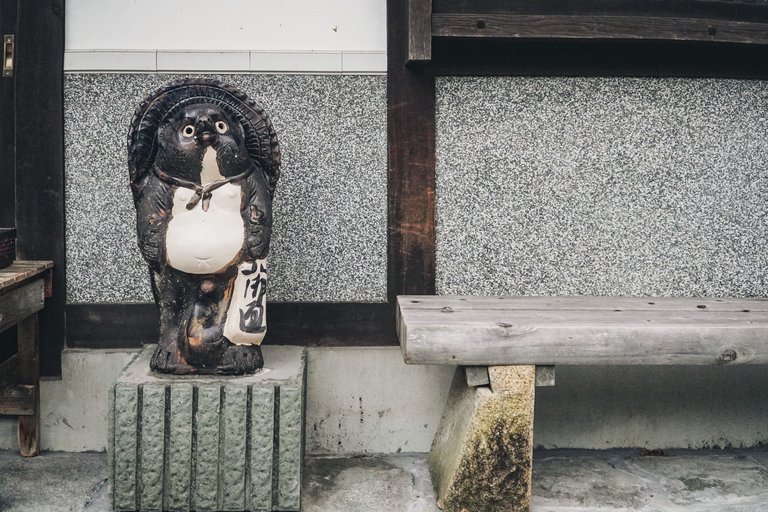
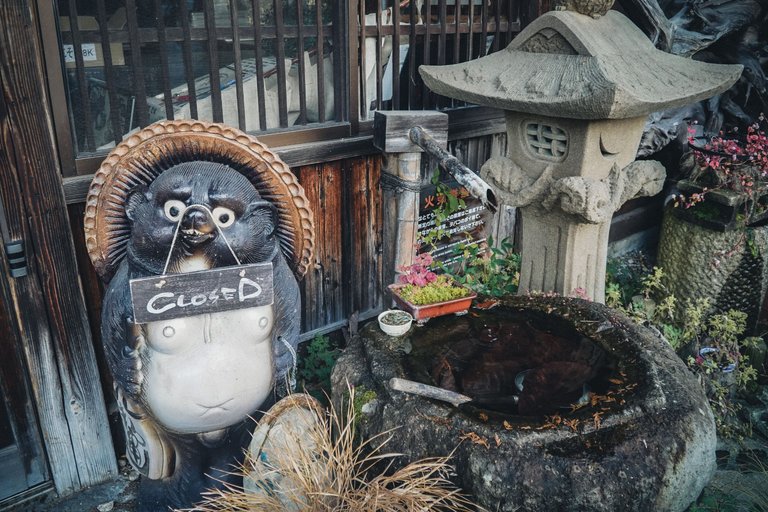
图文 by Donica,谢谢来访!=)
All content by @itchyfeetdonica. Thank you for visiting!

For the best experience view this post on Liketu
本尊那麼秀氣可愛,把它製作的肚皮大大的😂😂😂
藤原最初看到的可能是只冬天加大版的XD
😆
@tipu curate
Upvoted 👌 (Mana: 27/67) Liquid rewards.
Thanks mate!🍗🍗🍻